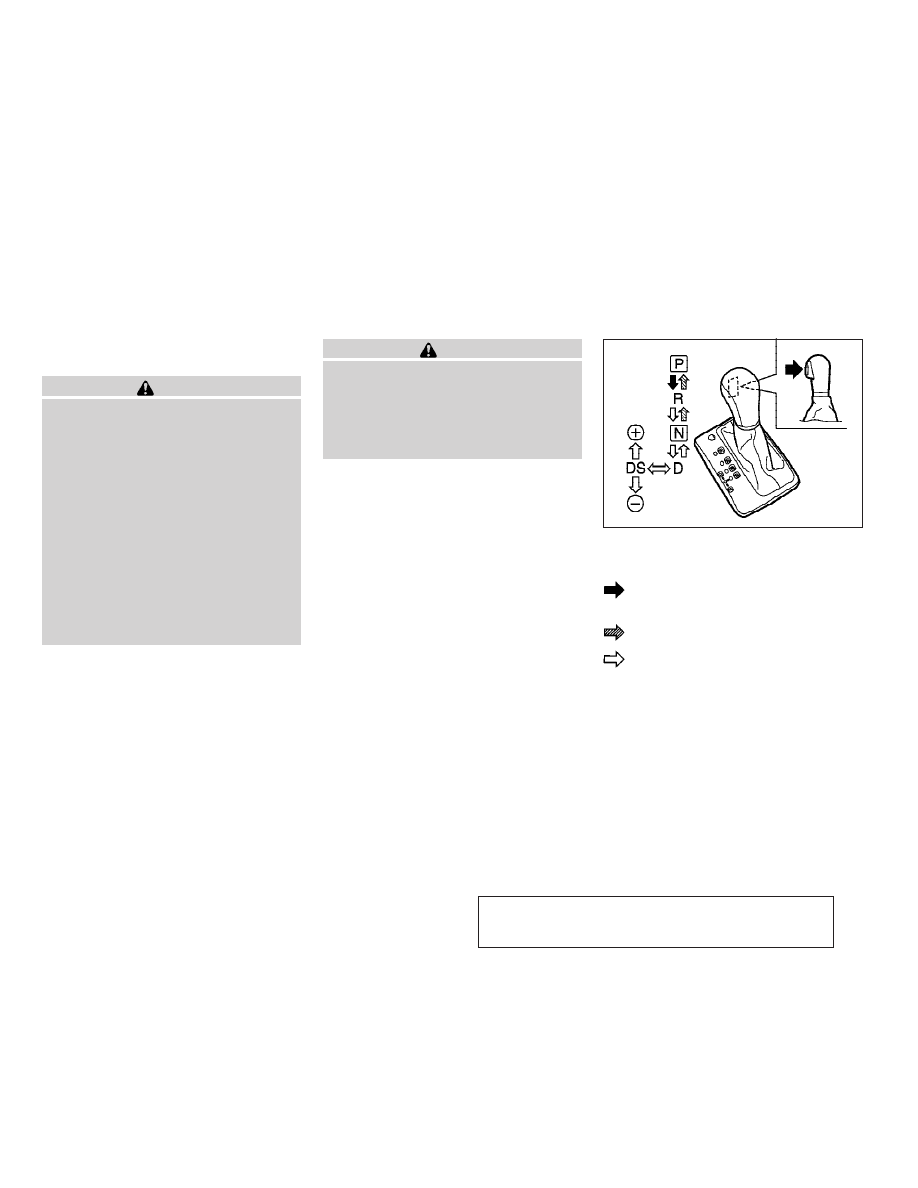Infiniti M45 (2010 year). Instruction - part 19

3. Release the parking brake and foot brake,
then gradually start the vehicle in motion.
WARNING
● Do not depress the accelerator pedal while
shifting from P (Park) or N (Neutral) to R (Re-
verse), D (Drive), DS (Drive Sport) or instruction
shift mode. Always depress the brake pedal
until shifting is completed. Failure to do so
could cause you to lose control and have an
accident.
● Cold engine idle speed is high, so use cau-
tion when shifting into a forward or reverse
gear before the engine has warmed up.
● Never shift to P (Park) or R (Reverse) while
vehicle is moving forward. Never shift to P
(Park), D (Drive) or DS (Drive Sport) while
vehicle is moving rearward. Failure to do so
could cause you to lose control and have an
accident.
CAUTION
● When stopping the vehicle on an uphill
grade, do not hold the vehicle by depressing
the accelerator pedal. The foot brake should
be used for this purpose.
● Do not downshift abruptly on slippery roads.
This may cause a loss of control.
Shifting
To move the selector lever,
: Push the button while depressing the
brake pedal,
: Push the button,
: Just move the selector lever.
After starting the engine, fully depress the
brake pedal and shift the selector lever from P
(Park) to any of the desired shift positions.
Push the button to shift into P (Park) or R
(Reverse). All other positions can be selected
without pushing the button.
SSD0795
5-12
Starting and driving
w
—
—
05/19/09—tbrooks
X